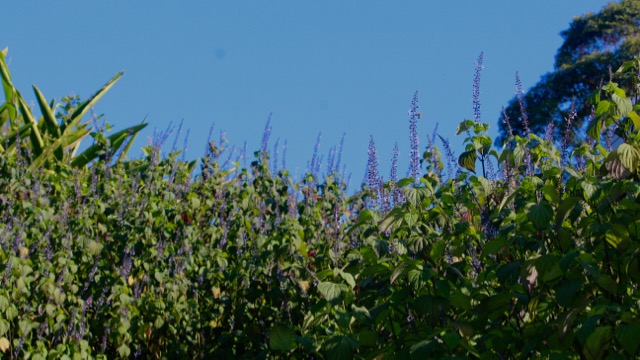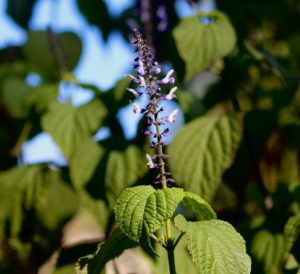
Salvia roscida has a unique form which gives it a particular role in my garden as a hedge, screen or pioneer. It is tall, densely foliaged and upright, which makes it useful as a hedge or screen. Spikes of pale blue flowers are held vertically, above the foliage. As Rolando Uria comments, the stiff spikes of flowers are reminiscent of Plectranthus (Coleus). Here, flowers start in May (late Autumn) and last until Spring.
Description
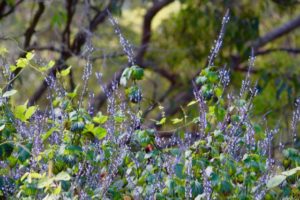
Salvia roscida can grow more than 2 m high. The caney stems branch from the base and form a nicely shaped upright shrub with a dense foliage cover.
Leaves are deeply veined and large for salvias, about 100 mm long and 80 mm wide, pointed at the apex and narrowing to the leaf stem, which is about 50 mm long. Leaf colour is mid green, but they pick up red tones with water stress. The aroma of the crushed leaves is only mildly grassy.
Flowers are held upright above the foliage on spikes of about 20 whorls. Flowers are about 10 mm long on 3 mm dark calyces. The lower lip is white, and the upper lip is two-toned pale blue and white.
Cultivation
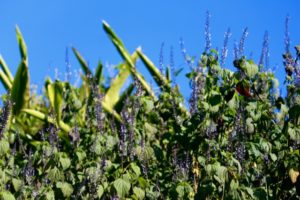
Salvia roscida grows readily from cuttings. I have spread it around the garden partly because it is so easy to snap stems off for pruning, set them in trenches, and watch them grow. In my garden, where weeds are one of the biggest problems, it has been useful as a pioneer plant, forming a quick hedge which suppresses weed germination with its heavy shade.
It’s a plant for full sun, but also does fine in part shade.
I think roscida would do best with constant moisture (although not permanently wet soil). It does however survive drought well; the leaves will wilt and pick up autumnal colours, but the plants bounce back when rain returns.
Naming
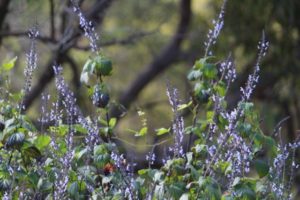
S. roscida has an alias of Salvia fallax. An authority on these botanical matters is The Plant List, published online by Kew and the Missouri Botanical Gardens, and they list roscida as the species and fallax as a synonym. It was originally described in 1905, and a description of S. fallax followed in 1910. From etymology ‘fallax’ would mean deceptive or spurious, while ‘roscida’ would mean dewy.
In my main salvia resources: BC doesn’t list it at all, and nor does JW. ST lists it as fallax but says it might be properly roscida. RM lists it as roscida and says it is a.k.a. fallax. RU lists it as roscida only.

